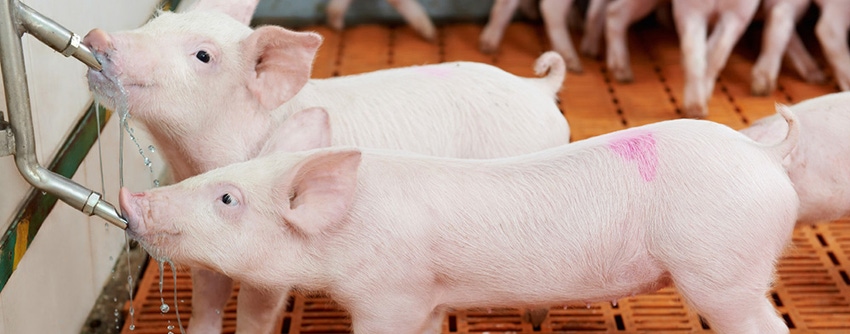Control subclinical ileitis to maximize ROI and performance
April 18, 2016

Sponsored Content
You monitor your growing pigs’ weight gain, feed efficiency and performance closely. So, when you notice anomalies, it should raise red flags. The pigs may look healthy, but hidden signs of disease are impacting weight gain and overall performance.
An intestinal disease, ileitis, is found in growing pigs, with the most common clinical signs manifesting as mild to moderate diarrhea. A U.S. serological survey found that at least 96 percent of herds are exposed to Lawsonia intracellularis, the bacterium that causes ileitis.1 Nearly 60 percent of U.S. herds are infected with the subclinical form of ileitis.
“Ileitis causes lesions to form in the intestinal lining of pigs,” says Dr. Jessica Seate, technical manager with Boehringer Ingelheim Vetmedica, Inc. “And, although it is difficult to diagnose, subclinical ileitis can be very costly due to the damage it causes, even in the absence of diarrhea, weight loss or even death. These lesions, at minimum, cause pigs to reduce feed intake, which affects performance, feed conversion and uniformity.”
To show the effects of subclinical ileitis in the swine herd, an independent study was conducted showing a side-by-side comparison between an oral vaccine used to protect against ileitis versus a placebo. The study showed that no diarrhea or other clinical signs were present, but 65 percent of the pigs were infected with ileitis by 16 weeks of age.2
“The study showed that even though this infection was subclinical, vaccination resulted in a 15.7-pound heavier pig at slaughter, with faster weight gain, a heavier carcass and a net benefit of more than $11 per pig,” notes Dr. Seate.
| Vaccinated with Enterisol® Ileitis | Non-vaccinates |
Starting Weight (lbs.)** | 17.5 | 17.0 |
Average Daily Gain (lbs./day)* | 1.68 | 1.55 |
Final Live Weight (lbs.)* | 268.1 | 252.4 |
Carcass Weight (lbs.)* | 213.9 | 201.2 |
Feed Conversion Ratio | 3.3 | 3.45 |
**P ≤ 0.412
*P ≤ 0.05
A second study was done on a large herd known to have subclinical ileitis. This study assessed the performance of 10 barns vaccinated with an oral vaccine and 11 control barns. The control barns received an in-feed antibiotic instead of the vaccine. Results showed that vaccinated pigs had significantly improved average daily gain, feed conversion and mortality, with a net benefit of $4.64 per pig when compared to an in-feed antibiotic program.3
| Vaccinated with Enterisol® Ileitis | In-feed antibiotics |
Average Daily Gain (lbs./day)* | 1.73 | 1.64 |
Feed Conversion Ratio* | 2.90 | 3.05 |
Mortality (%)* | 2.49 | 3.74 |
*P ≤ 0.05
“There is speculation that in-feed antibiotic programs may actually do more harm than good by masking awareness of ileitis through reducing expression of clinical signs without controlling the infection,” Dr. Seate explains. “The result is a false sense of security in the feed antibiotic program and unrecognized ongoing losses due to ileitis.”
She adds that due to the widespread nature of Lawsonia, the best management practice to protect the swine herd from ileitis is through vaccination.
“It is important for producers to look at a robust vaccine program to protect their investments,” concludes Dr. Seate. “Vaccinating pigs with an easy-to-use oral vaccine, like Enterisol® Ileitis, helps build immunity right at the point where bacteria attack to help prevent infection.”
###
1 Bronsvoort M, Norby B, Bane D, et al. Management factors associated with seropositivity to Lawsonia intracellularis in U.S. swine herds. J Swine Health and Prod 2001;9(6):285–290.
2 Scholz A, Nuske S, Kremer P and Forster M, et al. Costs of subclinical ileitis during finishing: an experimental approach. The Pig Journal 2008;61:26–35.
3 Boehringer Ingelheim Vetmedica, Inc. Enterisol Ileitis field trials summary. Technical Bulletin 2003. Available upon request.
Enterisol is a registered trademark of Boehringer Ingelheim Vetmedica GmbH, Ingelheim, Germany. ©2016 Boehringer Ingelheim Vetmedica, Inc.
You May Also Like



